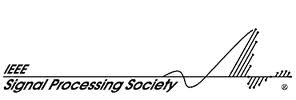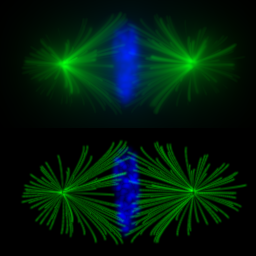 |
 |
 |
 |
 |

Deconvolution is one of the most common image-reconstruction tasks that arise in 3D fluorescence microscopy. The aim of this challenge is to benchmark existing deconvolution algorithms and to stimulate the community to look for novel, global and practical approaches to this problem.
The challenge will be divided into two stages: a training phase and a competition (testing) phase. It will primarily be based on realistic-looking synthetic data sets representing various sub-cellular structures. In addition it will rely on a number of common and advanced performance metrics to objectively assess the quality of the results.
The results of the second edition of the challenge have been presented during a special session of the ISBI conference on Wednesday, April 30, 2014. Below is the list of the participants with the top-3 submissions. Thanks to the financial support of the IEEE Signal Processing Society, these participants have been awarded money prizes!
This is the second edition of the 3D Deconvolution Microscopy Challenge, after the first edition which took place in the framework of ISBI 2013. A summary of the first edition can be found here.
Thanks to the financial support of the IEEE Signal Processing Society, we will again be able to award prizes for the best submissions! The authors of the best submissions will have the opportunity to present their method and work at ISBI 2014!
With this new edition the organizers will build upon their past experience, so as to appeal to an even broader base of participants. One of the most significant changes concerns the forward model, which has been updated so as to provide an even better description of what happens in a widefield fluorescence microscope. Concretely this means that the correct treatment of boundary conditions will be an important aspect of this year's competition.
The challenge is open to three main groups of participants: academic algorithm designers, developers of open-source (or free) software and providers of commercial solutions. Note that users of deconvolution software are also allowed to enter the tournament; their group assignment will be determined by the type of software they use.
After a training stage, the participants will enter a competition stage whose goal is to select three finalists in each group. The selection will be based on a weighted average of different performance metrics. However there will be no global ranking so as to promote the participation of new entrants to the field.

The challenge will be based on a set of computer-generated 3D image stacks that simulate optically-sectioned digital micrographs of biological samples. This will allow us to define an unambiguous ground truth for all deconvolution tasks that will be assigned to the participants. However, the ground truth will not be accessible to the participants, as in a real deconvolution problem.
The images reproduce several distinct sub-cellular structures that are typically observed in mitotic cells (point sources, filaments, membranes and dense volumetric features). To account for the use of different fluorescent markers, each class corresponds to a specific color channel. For simplicity, we assume that there is no cross-talk between these color channels.
Our simulation engine is further based on a faithful physical description of a widefield digital microscope, combining an advanced PSF model with a noise generator that accounts for shot noise, electronic noise and quantization.
The idea of the challenge is to make the participants follow a reasonably complete deconvolution workflow, with several hurdles that are representative of real situations. These hurdles may include algorithm selection, PSF-inaccuracy compensation, noise-model calibration and regularization-parameter adjustment. We will ensure a realistic setting by adequately choosing the information that is disclosed to the participants, while limiting the total number of unknowns so as to keep the task accessible.
Ultimately the goal for the participants is to generate the best-possible estimate of the ground-truth data, by inverting the convolution operation without amplifying noise in an overwhelming manner. To allow for a direct comparison, the estimate will have to follow the same sampling conventions as the ground truth, especially regarding the voxel sizes and the origin of the coordinate system.
The quality of the deconvolved data will be judged using a collection of quantitative performance metrics, ranging from standard ones (e.g., MSE, SSIM, NMISE, etc.) to more advanced structure-oriented and post-processing-based metrics.
The best deconvolution results will be selected based on an aggregate measure computed as a weighted average of the aforementioned metrics.
The registered participants will receive soon a personalized upload link.
January 6, 2014The evaluation stage of the second edition of the challenge has started.
November 6, 2013The official stage of the challenge will last around 2 months.
November/December, 2013The training stage of the second edition of the challenge has started. Follow this link to register and receive e-mail updates.
July 17, 2013